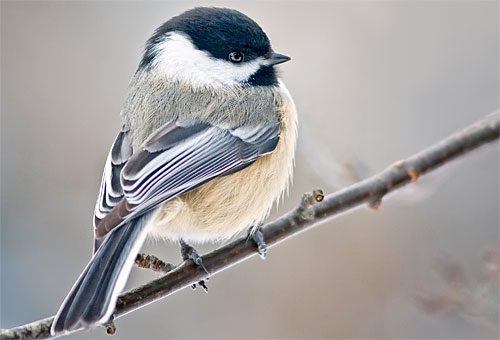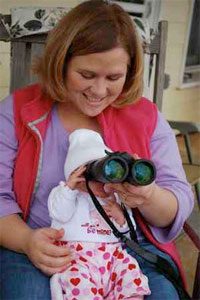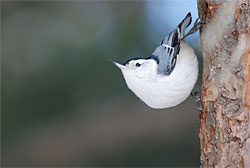Great Backyard Bird Count… Or GREATEST Backyard Bird Count?
By Pat Leonard
February 8, 2010
The 13th annual Great Backyard Bird Count coming up February 12-15, 2010 could be the greatest ever. It all depends on how many people heed the call to participate.
I likes to think of each checklist a bird watcher submits as illuminating a small but important part of North America—your neighborhood. Each is a single pixel—and the more pixels people send in, the sharper the picture we get of winter bird distributions across the continent.
The GBBC is pretty simple really. We ask that you watch and count birds anywhere you like for a minimum of 15 minutes on one or more days of the count. If you can’t identify a bird, you don’t have to report it. The most important thing to remember is to only report the highest number of each species you see together at any one time—that way you can be sure you’re not counting the same birds over and over. (Hey, can you tell two Black-capped Chickadees apart?!). You may submit your checklists over the four days of the count if you like, but you have until March 1 to enter your data at http://www.birdcount.org.

The GBBC is just plain fun (and easy) for the people who participate. For some, it’s a way to make a lifelong pursuit do double duty as they take information they’d be collecting anyway and share it with the GBBC. For others, it’s an awakening of sorts—and they get turned on to the world of birds when they first start paying attention to them for the Great Backyard Bird Count. It can be a passing of the torch, as adults introduce children to the joys of bird watching. GBBC participants seem to have an altruistic streak. We hear often how much they appreciate the idea of contributing to a continentwide project whose ultimate goal is to add information about bird populations to multiple, ongoing efforts to track birds so the data may be used for conservation.

Beyond the bird-watching part, there’s more fun! Each year we get thousands upon thousands of stunning entries in the GBBC photo contest. Anyone who participates in the count has a chance to win one of the great prizes contributed to the count in a random drawing. You’ll find bird games and quizzes on the GBBC kids’ page. You can also tweet about the birds you’re seeing—just add #gbbc to your message and it will appear in the Twitter widget on the GBBC home page. Become a fan on the GBBC Facebook page and invite others to try it out for the first time.
I have high hopes for another year of record-setting participation (dare we hope to break the 100,000 checklist mark?). We’ve added Bird Studies Canada as our Canadian partner this year, and thanks to sponsor QuebecOiseaux, we now have much of the website translated into French.
On behalf of the GBBC founding partners, the Cornell Lab of Ornithology and the National Audubon Society, as well as our new Canadian partner, Bird Studies Canada, I hope you’ll catch the fever and join us for the Great Backyard Bird Count, February 12-15!

All About Birds
is a free resource
Available for everyone,
funded by donors like you
American Kestrel by Blair Dudeck / Macaulay Library
